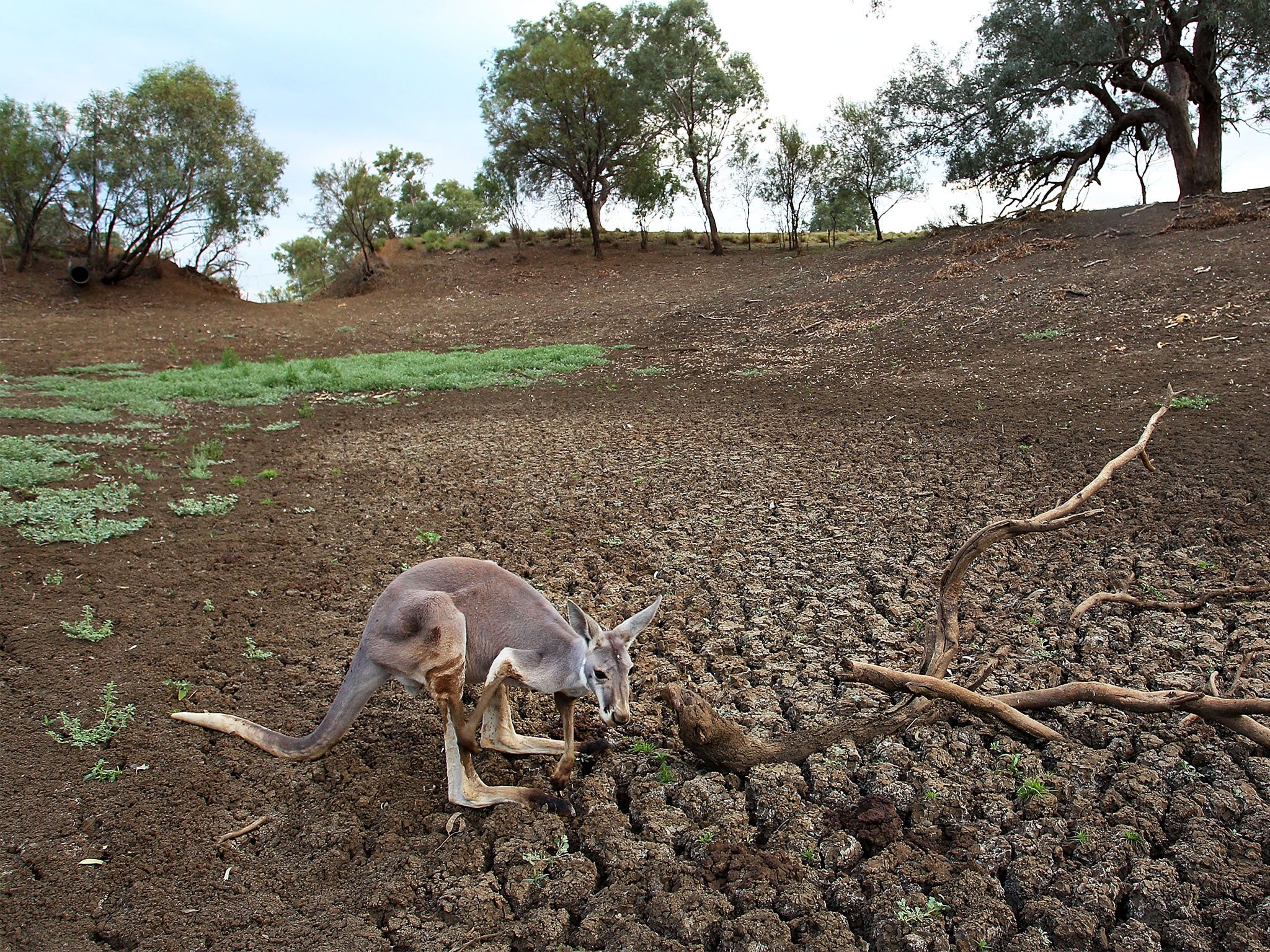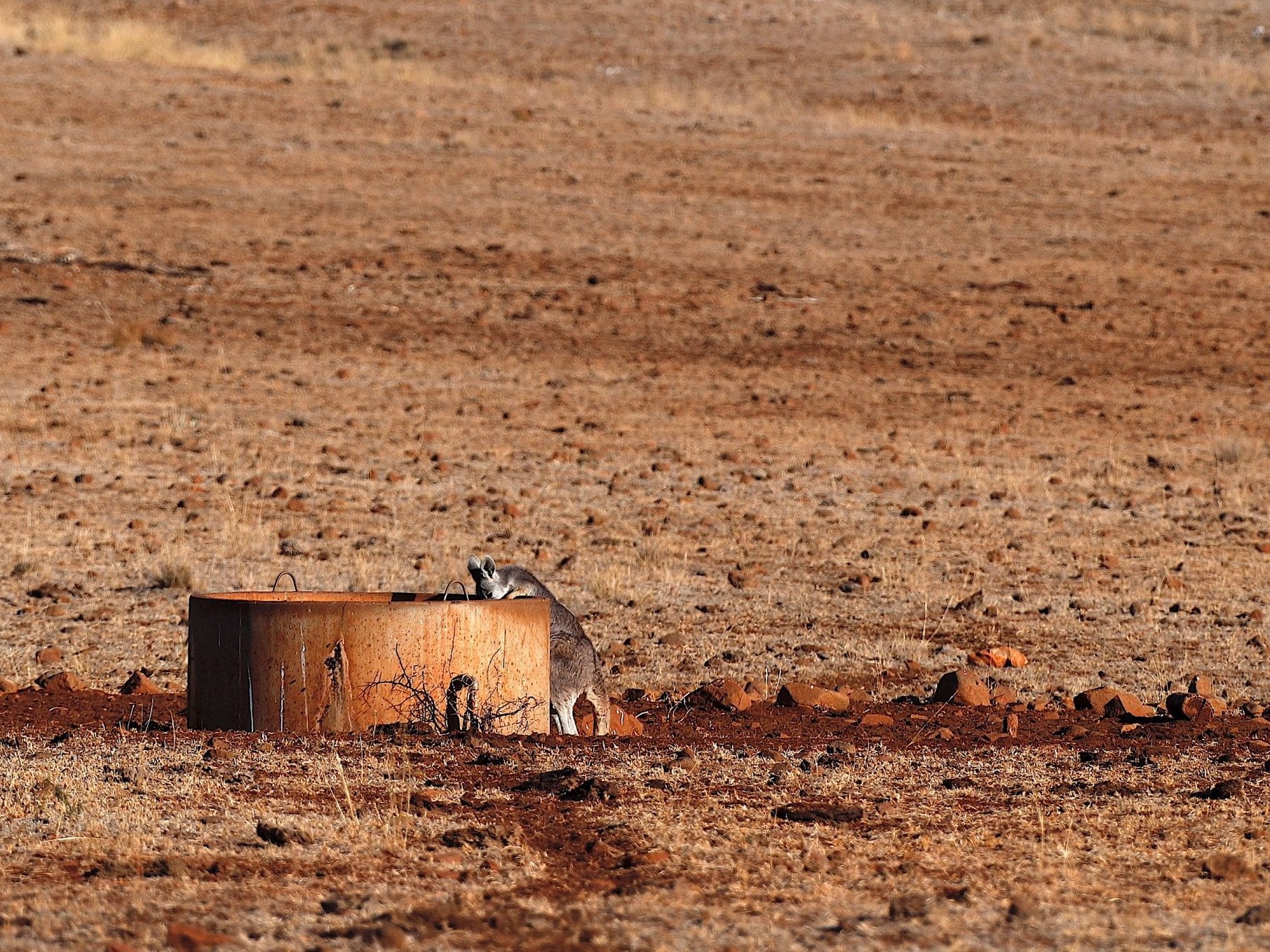Australia tells farmers they can kill more kangaroos because of drought
Rules relaxed as New South Wales experiences driest start to year since 1965

Your support helps us to tell the story
From reproductive rights to climate change to Big Tech, The Independent is on the ground when the story is developing. Whether it's investigating the financials of Elon Musk's pro-Trump PAC or producing our latest documentary, 'The A Word', which shines a light on the American women fighting for reproductive rights, we know how important it is to parse out the facts from the messaging.
At such a critical moment in US history, we need reporters on the ground. Your donation allows us to keep sending journalists to speak to both sides of the story.
The Independent is trusted by Americans across the entire political spectrum. And unlike many other quality news outlets, we choose not to lock Americans out of our reporting and analysis with paywalls. We believe quality journalism should be available to everyone, paid for by those who can afford it.
Your support makes all the difference.Farmers in Australia are being encouraged to shoot more kangaroos as parts of the country struggle with the worst drought in more than half a century.
New South Wales has had its driest start to the year since 1965 with 309,000 square miles – an area three times the size of the UK – now in drought.
The conditions mean kangaroos have been competing with livestock during the intensely dry spell.
To tackle the problem, the state government has lifted the number of kangaroos that farmers are allowed to shoot and reduced bureaucratic red tape facing landholders applying for permission to shoot.
The requirement to tag dead kangaroos to keep a tally of the numbers shot across the state has also been dispensed with and farmers can apply online or over the phone for shooting permits rather than in person.
The measures were announced by the state government in June but came into force earlier this week.
Niall Blair, New South Wales primary industries minister, justified the move saying the number of kangaroos had reached “plague proportions”.
He said: “Many farmers are taking livestock off their paddocks, only to then see kangaroos move in and take whatever is left. If we don’t manage this situation we will start to see tens of thousands of kangaroos starving and suffering, ultimately leading to a major animal welfare crisis.”
Less than 10mm of rain has been recorded in the last month across central, western and northern parts of the New South Wales – Australia’s most densely populated state – and kangaroos are increasingly moving towards human habitation in search of water and food.
Farm reservoirs have dried up, crops are failing and with dry conditions forecast to continue for the next three months, farmers have had to decide whether to continue the expensive and laborious task of hand-feeding cattle and sheep or sell their livestock.


Malcolm Turnbull, Australia’s prime minister, has unveiled a package of measures worth A$140m (£80m) to assist farmers coping with the conditions and for mental health support.
Lachlan Ennis, a farmer in New South Wales, backed the plan, telling the Northern Daily Leader: “Just after the rain, you’ll find bits of green pick shooting up, and the ‘roos get in there and eat it all before it’s big enough for cattle or sheep to eat it.
“Some properties have got a massive number of ‘roos, and you see a lot more of them in drought. They’re out and about looking for food and water.”
But the plan has faced criticism, including from Steve Garlick, who runs a sanctuary for injured native animals.
“Kangaroos are not in plague proportions,” he told ABC News. “They might be in some specific areas, and that’s because we are in a drought, there’s no doubt about that. But no one seems to be interested in any of the wildlife in this drought situation. It really does open the door to that element of society that thinks they can just go out and have fun on a Friday night with a few cans of beer and a gun.”
Ray Borda, president of the Kangaroo Industries Association of Australia, which represents commercial shooters who hunt kangaroos for meat and leather, also voiced opposition to looser rules.
“We see this as probably the worst possible outcome for the kangaroo,” he said. “Anybody on the land that will make a phone call to the Department of Environment can get permission to shoot almost whatever they want to shoot and it’s unaudited and unchecked and that’s our concern – animal welfare.”
Estimates put Australia’s kangaroo population at almost 50 million, with more than a million killed each year to protect endangered grasslands and wildlife.
Join our commenting forum
Join thought-provoking conversations, follow other Independent readers and see their replies
Comments